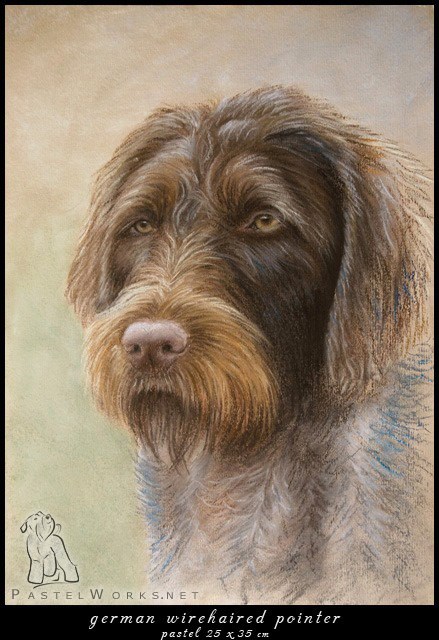
Put another way, ticking is a pattern of colored hair (usually extremely small spots of colored hair or coat flecks) that happens inside what would otherwise be white markings. Ticking is the color you’d see if the area hadn’t been white.
For ticking to express itself genetically, there has to be a white spotting gene. If the area would have been brown, for example, ticking is brown. If, as in the legs of a black and tan dog, the area is black, ticking will be black. Ticking isn’t present at birth but begins to develop when puppies are about to be three weeks old. Ticking is inherited as a dominant but sometimes results in a puppy being born unticked but whose breed requires it. Invariably, it always seems to be the pick puppy (read: #Murphy’s Law). Welsh Springer Spaniels can have ticking, so can Bluetick Coonhounds, Australian Cattle Dogs and German Wirehaired Pointers. If your dog is “ticked,” show us?
Image: German Wirehaired Pointers by Tobiasz Stefaniak

NPDD, I’m thinking that “ticking” got stuck in your head, like a song you heard and lingered after the featured breed this week. Basset Bleu de Gascogne, so here is another “TICKED” breed, sometimes referred to as mottled. pup at 7 weeks
1 year old BBdG
LOL, maybe so, Corky! We sure had a good time getting to know your wonderful breed!
Wired Haired Pointing Griffons I believe fit into this category
Great picture, Bonnie – and we think you’re right!
This is isis is just recently heard of this ticking an its peeked my curiosity very much I always wondered how my solid white puppy turned white with brown spots. So I think she would fit into the tick category.